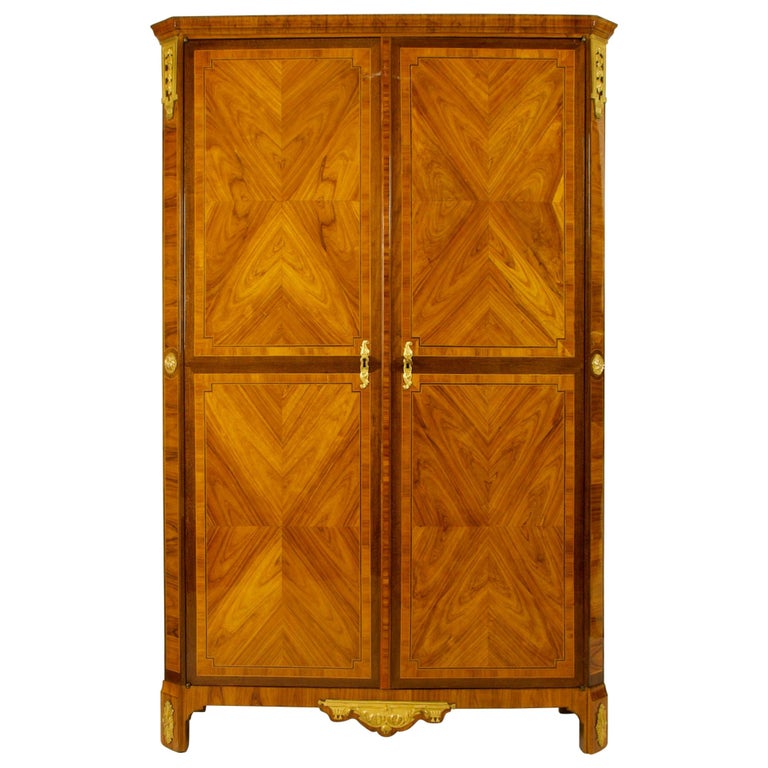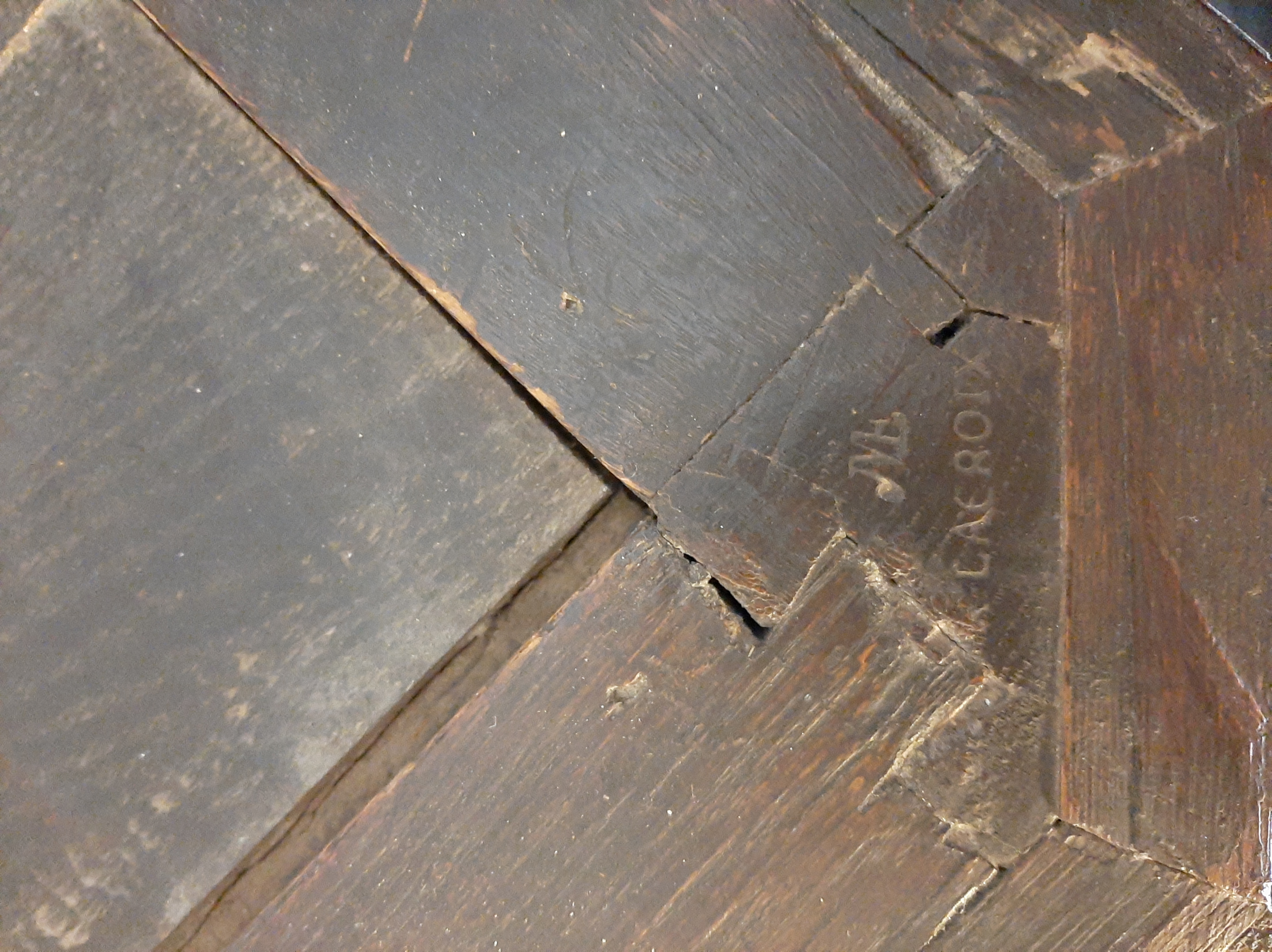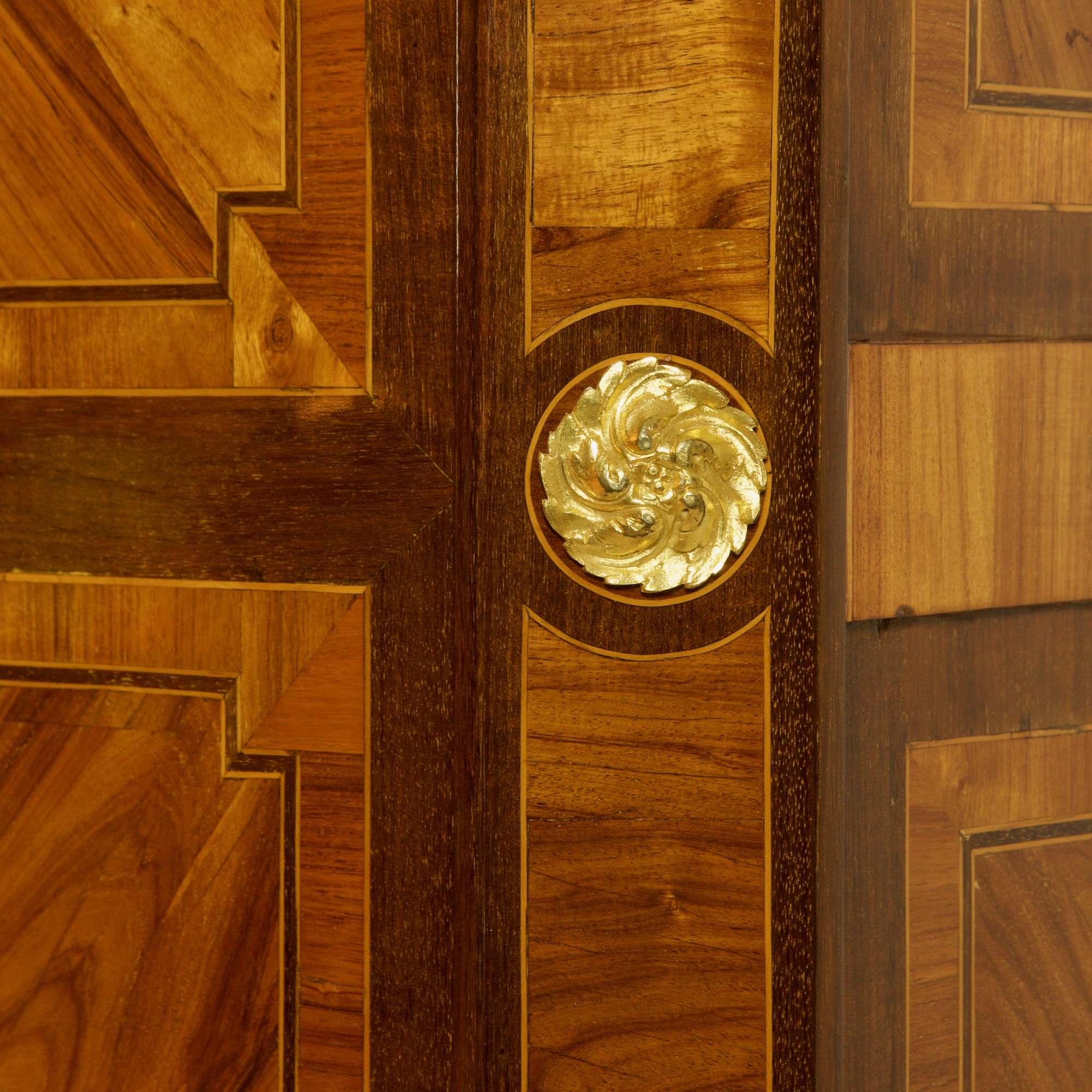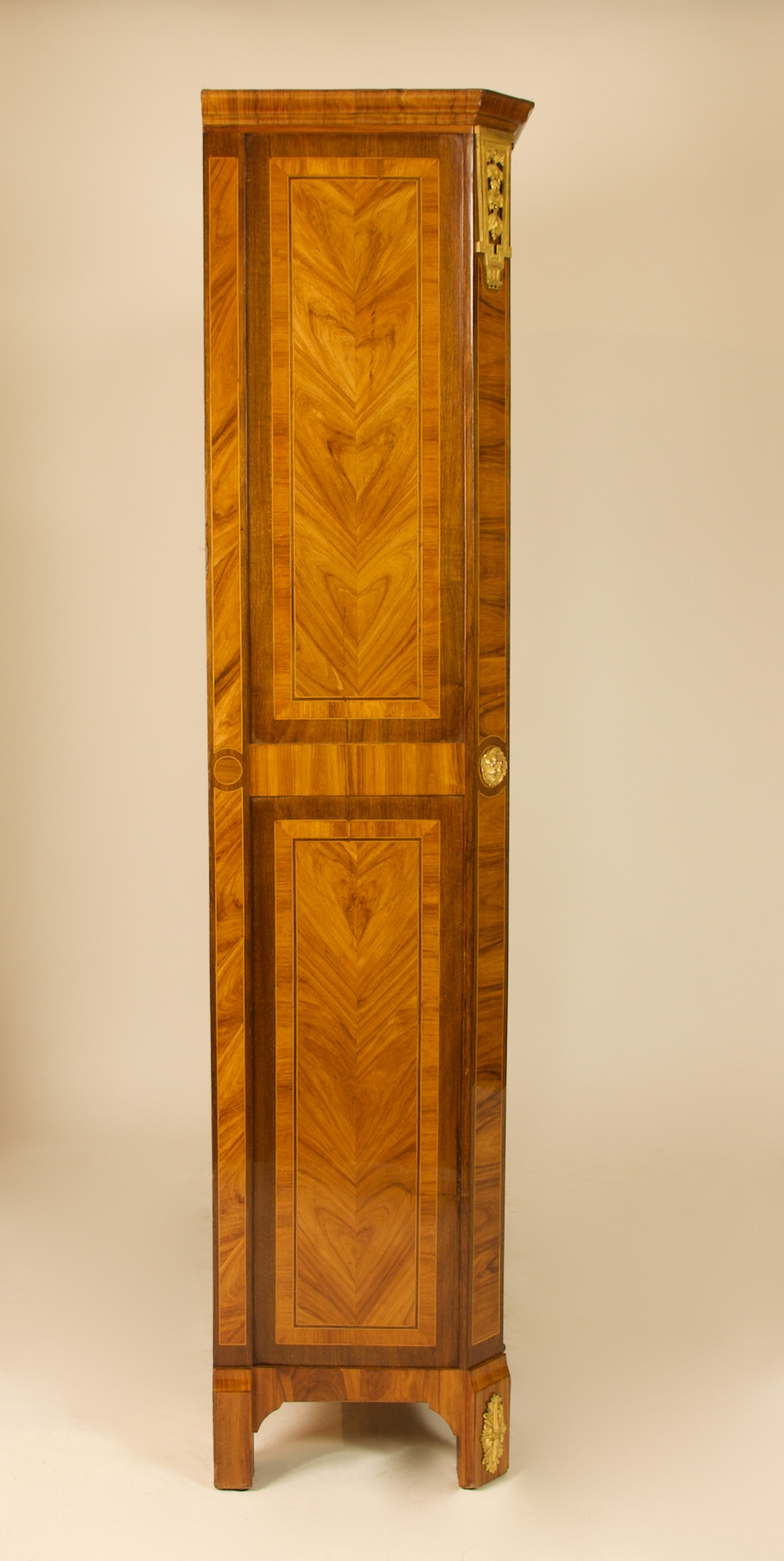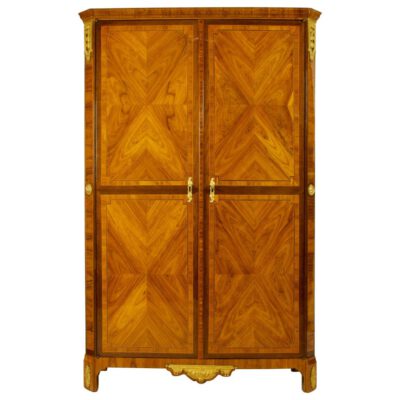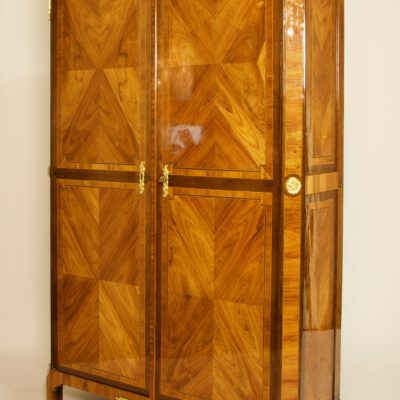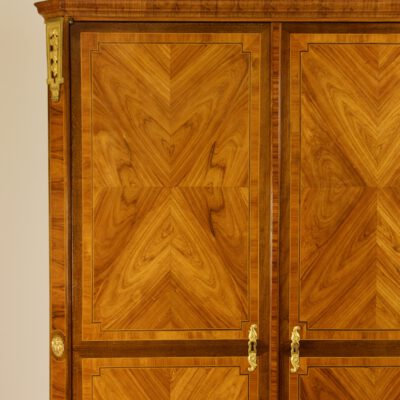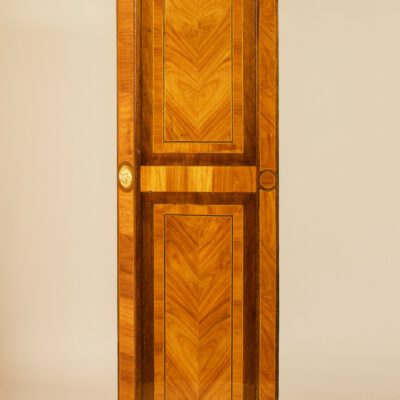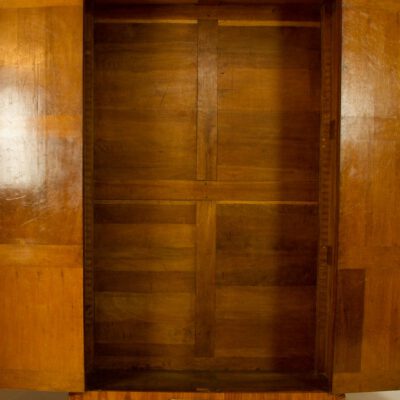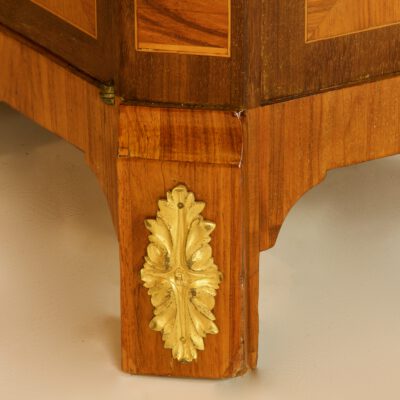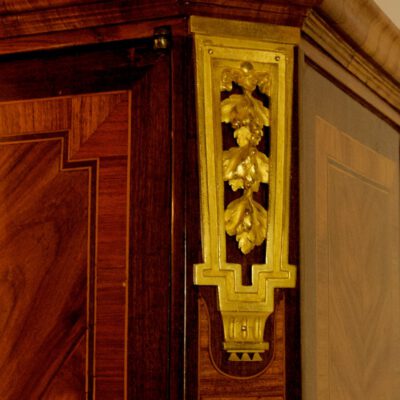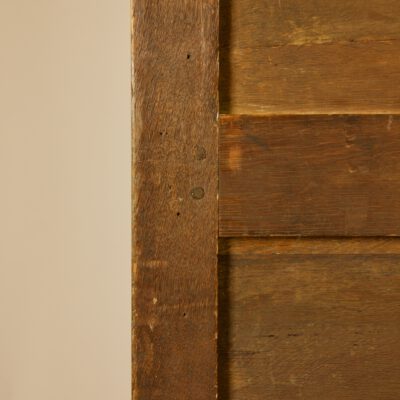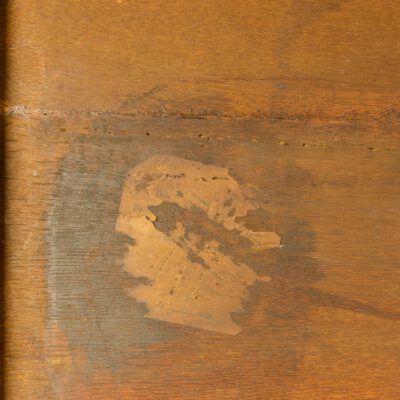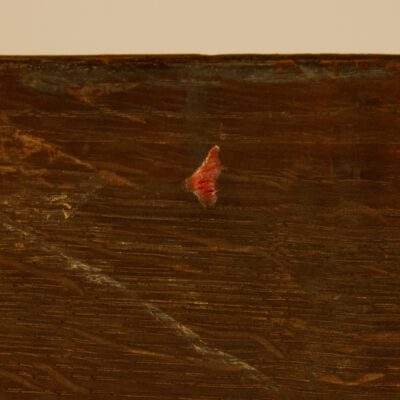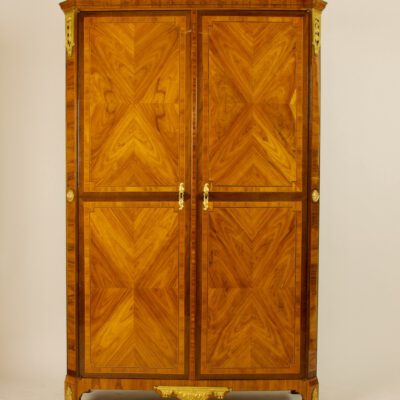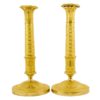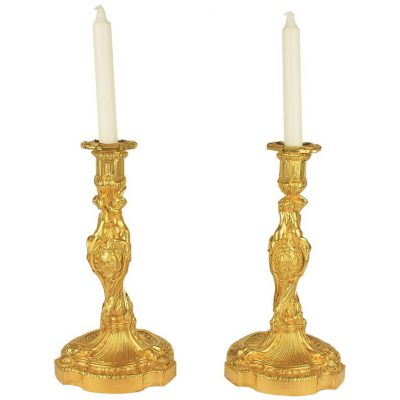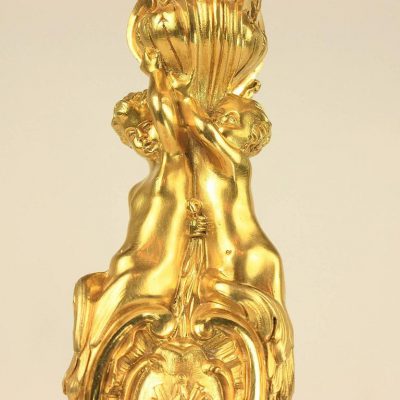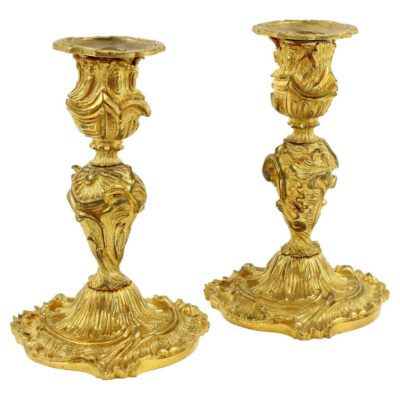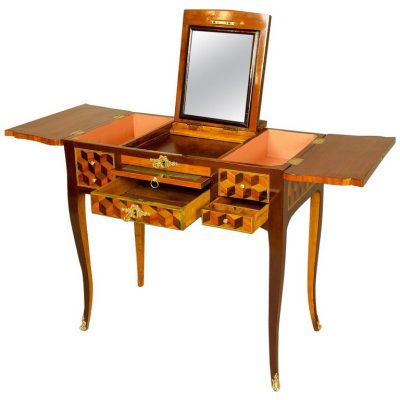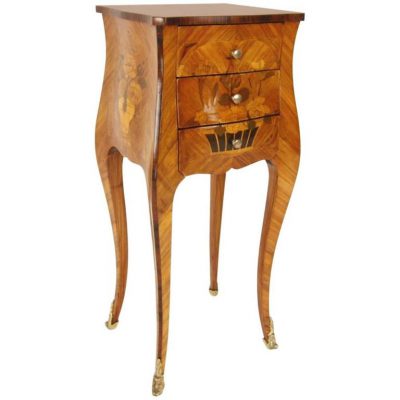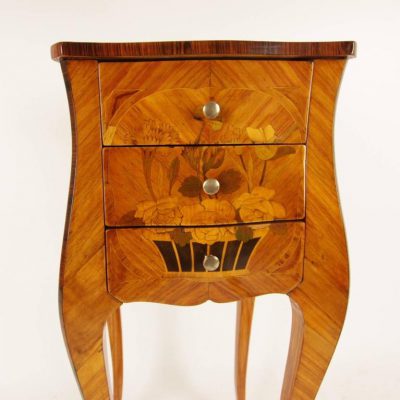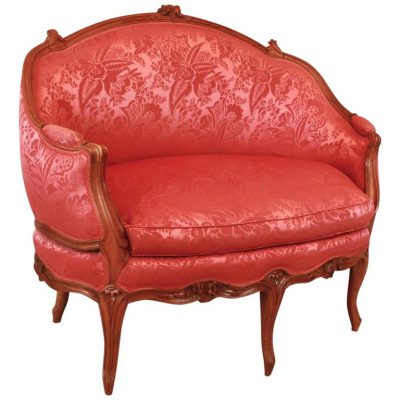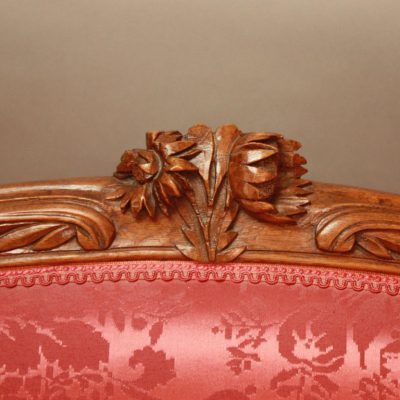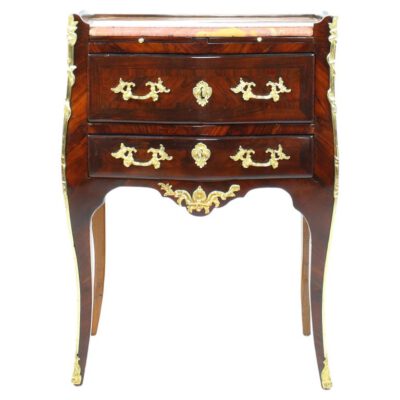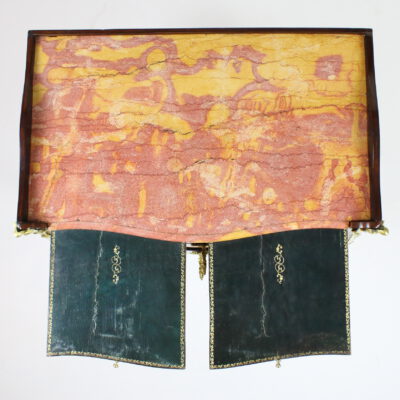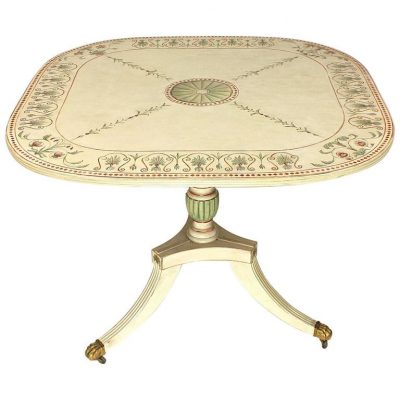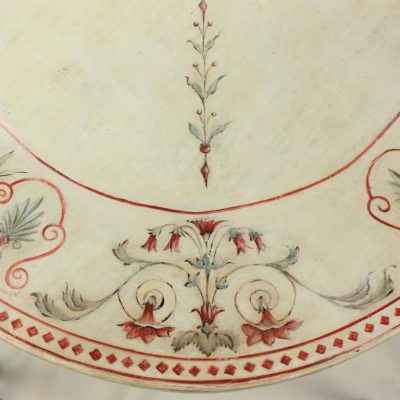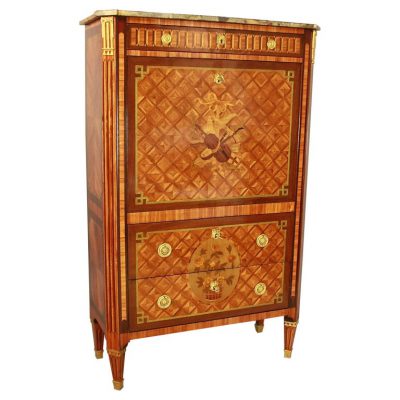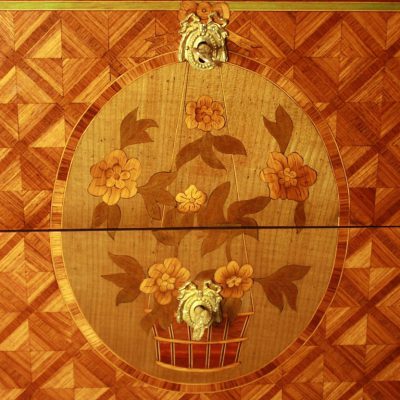Museal French 18th Century Louis XVI Marquetry Gilt Bronze Cabinet or Armoire stamped by Roger Vandercruse dit Lacroix (1728-1799)
Of straight rectangular shape with canted corners standing on four bracket feet and being surmounted by a moulded rectangular cornice. The armoire opens with two large doors to reveal four removable shelves. The doors are divided into cartouche panels, each panel quatre-foil veneered “en ailes de papillon” highlighting the beautiful grain of the marquetry on an oak carcass and being surrounded by fine neoclassical banding. Both doors close with one pasquil lock, the keyhole surrounds still show the Louis XV pittoresque style, while the ormolu mounts of the feet, the apron, the corner centers as well as the corner tops show all the typical features of the early Neoclassical Louis XVI style. The cabinet top bears the stamp of Lacroix as well as the that of the Paris cabinetmakers’ jury, “la Jurande”.
Depth including cornice: 41 cm (16.14 in. )
A museal cabinet wardrobe or armoire of very elegant proportions displaying the outstanding craftsmanship of Roger Vandercruse dit Lacroix.
Roger Vandercruse dit (named) Lacroix belonged to the most important furniture-making dynasty of the 1700s. The son of an independent ébéniste, he was related through marriage to some of the most successful ébénistes of his day, includingJean-François Oeben, Jean-Henri Riesener, and Simon Oeben. He became a master in 1755 and took over his father’s workshop. At the time of his marriage, his business was still a modest one; while his wife brought a dowry of 1,350 livres in cash, clothes, and linen to the marriage, he brought only 800 livres.
From 1769 to 1774, Vandercruse Lacroix supplied furniture to the Garde-Meuble de la Couronne (Royal Furniture Warehouse) and stamped his works R.V.L.C. as well LACROIX. His pieces were admired for their marquetry in geometric and floral patterns made of tulipwood, amaranth, and kingwood. His business prospered as the duc d’Orléans and Madame du Barry joined his list of clients. Vandercruse Lacroix also held several important positions in his guild. He retired from business during the French Revolution and died in 1799.
The works of Roger Vandercruse dit Lacroix can be admired at the most important international museums and collections, e.g. the Louvre/Paris, the Wallace Collection/London, J.Paul Getty Museum/Malibu and the Frick Collection as well as the Metropolitan Museum, New York.
Literature Biography: Pierre Kjellberg, Le mobilier francais du XVIIIe siècle, p. 784-806
Condition: excellent, min. wear consistent with age and use, min. fading, French polish refreshed – detailed condition report on request

